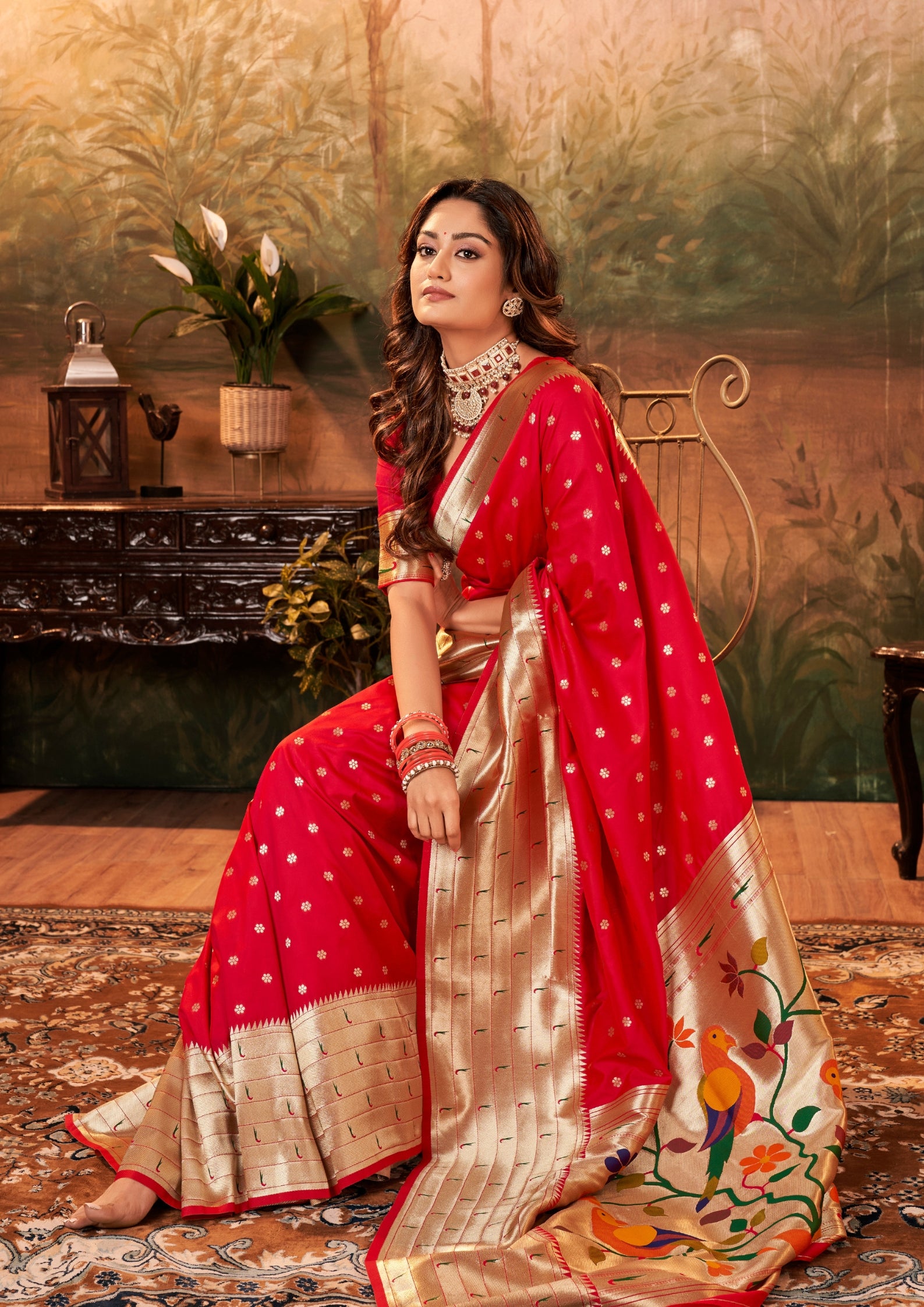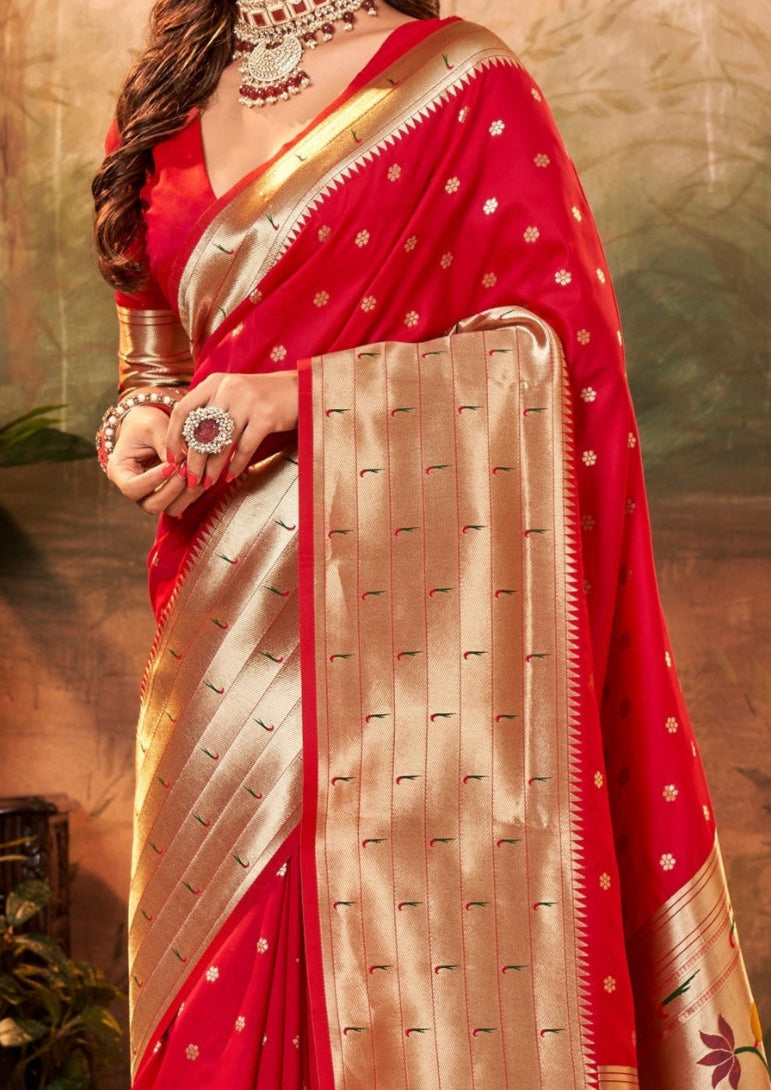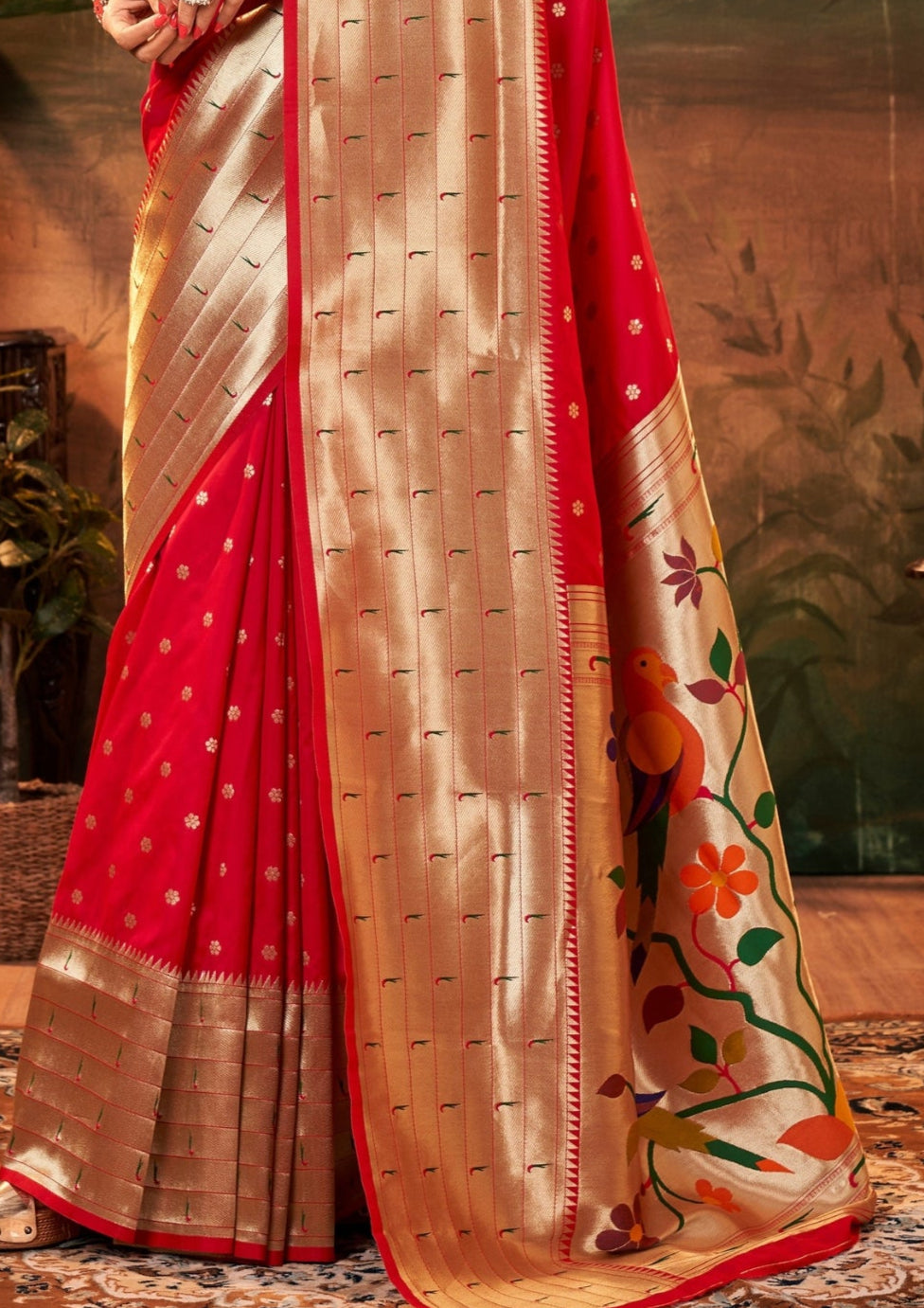Karwa Chauth is one of the most evocative and visually beautiful festivals in the Indian marital calendar — a day when married women fast from sunrise to moonrise for the wellbeing and longevity of their husbands. Among the many visible traditions of the day, the red saree stands out as an enduring, powerful symbol. But why red? What does the red Karwa Chauth saree mean culturally and emotionally? And how can modern women reinterpret this tradition while keeping it meaningful? This post answers all that — plus styling, fabric choices, and practical tips.
Why Red? Cultural and symbolic meanings

Red holds deep cultural resonance across many Indian traditions, especially those connected to marriage and auspiciousness:
-
Symbol of Auspiciousness and Good Fortune: Red is traditionally associated with Shakti (the feminine life force), prosperity and positive energy. Wearing red on Karwa Chauth is a way to invite blessings for marital harmony and household well-being.
-
Sign of Marital Status: In many communities, red is the go-to color for brides and married women. On Karwa Chauth, red visually reinforces the marital bond and the vow being observed.
-
Passion and Love: Beyond ritual, red signifies passion, warmth and emotional intensity — fitting for a day that celebrates love and fidelity.
-
Continuity with Ritual Aesthetics: Red pairs beautifully with gold — from jewelry to embellishments — aligning with the festival’s overall aesthetic of opulence and reverence.
Traditional looks: fabrics, drapes, and motifs
Traditionally, Karwa Chauth sarees are rich in texture and embellishment. Some classic choices:
-
Silk (Banarasi, Kanjivaram): Luxurious weave, heavy borders and zari work make silk sarees a favourite for brides and women who want a timeless, regal look.
-
Bandhani and Leheriya: Popular in some regions for their festive prints and vibrant tones; they bring a celebratory, folk touch to the day.
-
Georgette/Chiffon with Embroidery: For a lighter, more contemporary look that still reads festive.
-
Embellishments & Motifs: Paisleys, peacocks, floral jaals, and traditional bridal borders often appear; zari, gota, sequins and stones add ceremonial glamour.

Modern reinterpretations
Karwa Chauth traditions evolve with time — and so do saree choices:
-
Different shades of red: From deep maroon and oxblood to corals and tomato red — each shade offers a different vibe while keeping the essential symbolism intact.
-
Mix-and-match: Red sarees paired with contrasting blouses (emerald, indigo, gold) create a modern palette without discarding tradition.
-
Fusion drapes: Pre-stitched sarees, saree-gowns or dhoti-style sarees allow more freedom in movement while keeping the Karwa Chauth look intact.
-
Minimalist red: Plain red silk or cotton with a statement accessory (maang tikka, nath or heavy bangles) for a refined, contemporary aesthetic.
Styling tips for Karwa Chauth

-
Jewellery: Gold or kundan sets complement red best. Don’t forget bangles (chooda or glass), mangalsutra and maang tikka to complete the marital look.
-
Makeup: Go for warm-toned makeup — bronze eyes, a soft blush and a classic red or deep maroon lip to coordinate with the saree.
-
Hairstyle: Traditional buns with gajra (jasmine), braided styles, or loose curls pinned on one side — choose what feels comfortable for a long day of rituals.
-
Footwear: If you’ll stand or move around during the evening rituals, pick comfortable heels or embellished flats; pre-breakfast practice at home helps.
-
Dupatta/odhani: A red saree paired with a rich dupatta or pallu with contrasting embroidery can be useful during the evening pooja and moon-sighting.
Practical considerations: fabric & comfort
Karwa Chauth involves a long day and evening; choose fabrics that balance look and comfort:
-
For cooler weather: heavier silks or brocades.
-
For heat/humidity: lightweight chiffons, georgettes, or cotton-silk blends that breathe.
-
If you’ll be fasting and active, avoid very heavy drapes — a pre-stitched saree or a saree with lighter embellishments can help.
Caring for your Karwa Chauth saree
-
Storage: Keep silk sarees in muslin covers; refold periodically to avoid permanent creasing.
-
Cleaning: Prefer professional dry-cleaning for zari or delicate embroidery. For lighter cotton/linen reds, mild hand-wash may work — but test a hem for colourfastness first.
-
Preservation: For heirloom sarees, consider acid-free tissue paper between folds and store in a cool, dry place.
Emotional and personal significance
Beyond symbolism, the red Karwa Chauth saree carries personal narratives — family heirlooms, gifts from mothers or in-laws, or a saree chosen with intent. For many women, wearing red on Karwa Chauth is a way to feel connected to family history, to mark a personal pledge, and to celebrate the enduring bonds of marriage.
Short checklist before Karwa Chauth
-
Saree and blouse ready + small safety pins for the pallu
-
Jewelry and accessories polished and packed
-
Comfortable footwear chosen and broken in
-
Makeup and hair trial (if trying a new style)
-
Emergency kit: safety pins, stitching kit, band-aids, small mirror
Frequently Asked Questions
Q: Is red mandatory for Karwa Chauth?
A: No — while red is traditional and symbolically strong, many women choose maroon, pink, orange, or even modern pastels. The emotional intent matters more than the exact color.
Q: Can I wear a red saree that’s lightweight (georgette/chiffon)?
A: Absolutely. Lightweight sarees are practical and can be just as elegant with the right accessories.
Q: Can unmarried women wear red on Karwa Chauth?
A: Karwa Chauth is predominantly observed by married women, but regional practices and personal choices vary.



0 comments